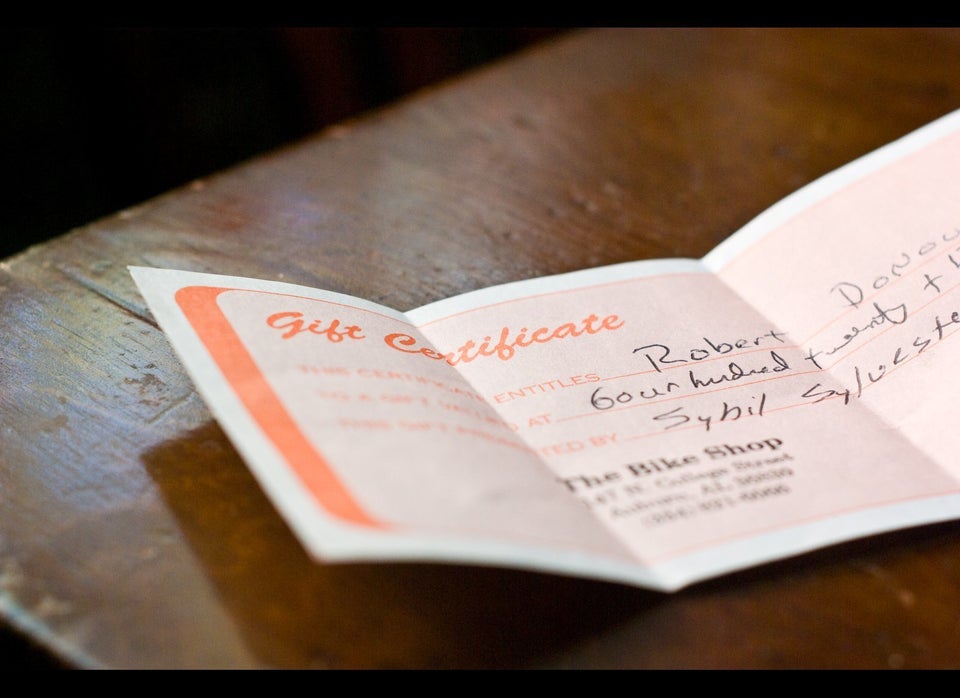If you've got teenagers, you already know how expensive high school can be. Besides food, clothing and school supplies, a whole host of extracurricular activities are competing for a share of your wallet -- even as you frantically try to save for college and your own retirement.
One of the biggest expenses you'll encounter is prom. Gone are the days of borrowing dad's suit and crepe paper streamers in the school gym: Today's proms are often more like a Hollywood premiere with limousines, designer gowns and swanky after-parties.
I'm not kidding. According to a recent nationwide survey conducted by my employer, Visa Inc., the average U.S. family with a high school student attending the prom expects to spend $978 this year. Surprisingly, that's down 14 percent from last year's survey average of $1,139 per family.
- On average, parents plan to pay for about 56 percent of prom costs, with their kids picking up the remaining 44 percent.
- Parents in lower income brackets (less than $50,000 a year) plan to spend an average of $733 -- a considerable share of the family budget. Thankfully, that's down significantly from last year's $1,245 estimate.
- Those earning over $50,000 will spend an average of $1,151.
- Interestingly, the men surveyed expect their families will spend $1,357, more than double the $637 women expect to pay. (Maybe dad's a soft touch?)
- New prom dresses often cost $100 to $500 or more.
- Plan on spending another couple hundred for shoes, accessories, flowers and professionally styled hair, nails and make-up.
- New tuxedos cost several hundred dollars, not to mention the formal shirt, tie, studs and shoes you'll need. Even renting all this will likely run over $150.
- Figure at least $80 an hour plus tip to rent a limousine for a minimum of four to six hours.
- Prom tickets typically cost $50 to $150 per person, depending on venue, entertainment, meals, etc. And don't forget about commemorative photos.
- The couple will probably need at least $50 for a nice pre-prom meal.
- After-parties can run anywhere from a few bucks at the bowling alley to hundreds of dollars for group hotel suites.
As with weddings and vacations, spending on prom can easily spiral out of control, especially if your teenager isn't used to sticking to a budget. Use this as a learning experience by getting your kid involved making tough decisions, helping to prioritize expenses from vital to non-essential. If they want to exceed your agreed-to budget, a part-time job might be in order.
To help with the prom budgeting process, Visa launched a free smartphone app last year called Plan'it Prom. You simply enter your budgeted amounts for each item and then track actual spending on your phone or tablet as you shop. The app also includes budgeting tips, a photo gallery and a timeline for tracking pre-prom deadlines. Plan'it Prom is available at the iTunes store, the Google Play store and from Practical Money Skills for Life.
- Shop for formal wear at consignment stores or online. As with tuxedos, many outlets rent formal dresses and accessories for one-time use.
- Have make-up done at a department store's cosmetics department or find a talented friend to help out.
- Split the cost of a limo with other couples, or drive yourselves.
- Team up with other parents to host a pre-prom dinner buffet or after-party.
- Take pre-prom photos yourself and have the kids use their cellphones or digital cameras for candid shots at various events.
- The Scholastic Aptitude Test (SAT) costs $51 each time it's taken, plus an additional $13 to $24.50 per individual subject test. Many students take the SATs at least twice.
- American College Testing (ACT) costs $33, plus another $15 for the writing test.
- An 18-hour SAT fundamentals review course from the Princeton Review will set you back $599 to $699.
- Personalized individual and small group tutoring sessions can cost thousands of dollars.
- College application fees -- often $40 to $90 per institution.
- Site visits. If you're looking at schools outside the area, costs can vary widely. Don't forget such variables as airfare, gas, lodging, meals, local transportation, etc.
- Professionally shot senior portraits and prints often cost hundreds of dollars.
- Graduation announcements, thank-you notes and postage -- depending on your network of family and friends, this could be $100-plus.
- Senior class dues -- check with your school.
- Yearbooks often cost $35 to $100, plus additional fees if you take out a congratulatory ad.
- Class rings -- different styles often run $100 to $500 or more.
- Cap and gown -- usually $25 to $50.
- Graduation gift and party -- it's up to you to manage expectations.
- Senior trip -- varies from school to school, but it could run hundreds of dollars for a ski weekend, for example.
Bottom line: You want to ensure your child has a memorable high school experience, but not at the expense of your overall budget. If you need help making a budget, numerous online tools are available at sites such as the U.S. Financial Literacy and Education Commission's MyMoney.gov, the National Foundation for Credit Counseling and Practical Money Skills for Life, a free personal financial management program run by Visa Inc.
This article is intended to provide general information and should not be considered legal, tax or financial advice. It's always a good idea to consult a legal, tax or financial advisor for specific information on how certain laws apply to you and about your individual financial situation.
